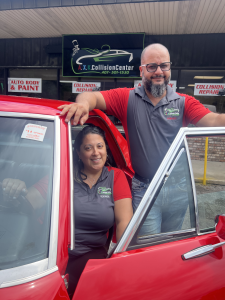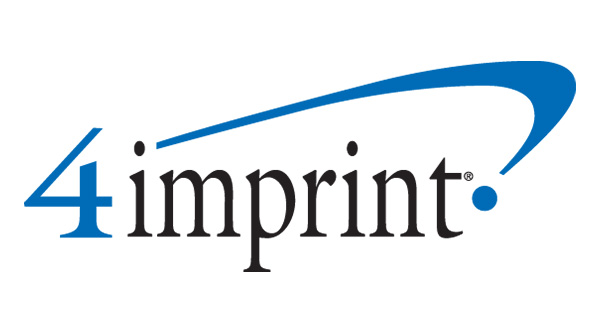Overcoming Staffing Challenges in the Automotive Repair Industry
Running an automotive repair shop comes with its share of challenges, but one of the most critical is finding and retaining skilled technicians. With the increasing demand for experienced workers and an increasingly competitive job market, shop owners must adopt strategies that go beyond the typical recruitment processes.

AXK Collision owners Veronica & Armando Perez
Drawing from conversations with a seasoned shop owner and DRIVE client, Veronica Perez of AXK Collision Center in Apopka, FL, this article explores effective ways to build a strong, skilled team through smart hiring, fostering a positive work culture, and addressing internal issues that may deter talented technicians from staying.
Identifying Essential Qualities in Candidates
One of the primary steps in overcoming hiring challenges is knowing what to look for in a technician. Shop owners are finding that adaptability and problem-solving skills are essential. In interviews, you can look for these traits by asking candidates to share examples of how they handled complex repairs or adapted to new tools and technologies. Veronica says, “While conducting the interview, we ask specific job-related questions. Based on the candidates’ responses, we invite them to perform tasks and see their hands-on techniques and evaluate the candidate based on those skills.”
Beyond the technical, it is crucial to assess whether a candidate’s character traits and emotional intelligence are aligned with your company’s culture and values. Veronica says, “Their values and work ethic is a priority. We evaluate candidates based on our company’s core values, which are at the heart of what we do DAILY. This should be mirrored in those candidates.”
Building a Positive Workplace Culture
It’s no secret that a supportive, motivating work culture plays a crucial role in employee satisfaction and retention. Technicians who feel valued and respected are more likely to stay long-term. Successful shop owners work to establish a positive environment by recognizing hard work, encouraging open communication, and showing genuine care for their employees’ wellbeing. For instance, regular team meetings to address concerns or set goals can reinforce a sense of unity and respect.
Incorporating a culture of continuous improvement also encourages growth, which can be particularly appealing to technicians looking for career advancement. When team members feel they have room to improve and are supported in doing so, they are more likely to be loyal to the shop.
Offering Competitive Incentives and Benefits
While competitive pay is a primary factor in attracting skilled technicians, other incentives can be just as crucial for long-term retention. Benefits such as health insurance, retirement plans, paid time off, and even gym memberships or wellness programs can be attractive, especially in an industry that is physically demanding. Some shops also offer reimbursements for certifications, which can help attract technicians who are looking to grow their careers.
Experienced shop owners also recommend setting up a structured incentive system based on performance and productivity, which can encourage technicians to meet high standards. For instance, performance bonuses, extra paid leave, or tool allowances can serve as powerful motivators.
Refining the Hiring Process
A common struggle for automotive repair shops is finding the right fit quickly enough to keep up with business demands. Streamlining the hiring process, without sacrificing quality, is essential. Many successful shop owners use a multi-step approach, such as initial screenings and skills assessments to ensure a candidate is capable and suited for the role. This approach can minimize turnover by identifying a strong fit before fully integrating new hires into the team.
Current employees can be excellent judges of a new hire’s technical ability and compatibility, reducing the likelihood of friction within the team. Involving experienced technicians in interviews can provide insight into how well a candidate would fit with the team’s dynamic and work pace.
Providing Thorough Onboarding and Training
Once hired, technicians must be set up for success. Poor onboarding can lead to confusion and frustration, leading new hires to leave prematurely. A thorough onboarding process familiarizes technicians with the shop’s processes, standards, and expectations while also helping them integrate into the team culture.
Offering training programs for new hires ensures that they understand the quality standards expected by the shop and are comfortable with the tools and technology used. By investing time and resources into onboarding and training, shop owners can improve retention rates and build a foundation of skilled, reliable employees.
Addressing Internal Process Issues
Sometimes hiring challenges arise from issues within the shop’s own processes rather than the talent pool. For example, if workflows are inefficient or equipment is outdated, it can lead to dissatisfaction among skilled technicians. Internal bottlenecks or frequent rework due to inconsistent quality control can lead to frustrations and decrease morale, especially if technicians feel they are ill-equipped to do their best work.
Veronica applies principles learned in DRIVE workshops, which suggest conducting regular reviews of internal processes to identify and address inefficiencies:
“As a company, we are striving for more organizational and shop efficiency. These items are constantly being addressed. As we grow in size, volume, and add more technicians, we strive to become better for them and the workplace environment.”
Streamlining workflows, investing in quality tools, and establishing clear quality standards can all improve the technician experience and encourage high performance and satisfaction.
Ensuring Clear Role Definition and Career Paths
Ambiguity in job roles or limited opportunities for growth can make technicians feel undervalued or unmotivated. Clearly defining each role’s responsibilities and offering a path for advancement can counteract this. For instance, establishing senior technician positions or lead roles for experienced employees provides them with a sense of purpose and a goal to work toward.
A structured career path can also make the shop more attractive to potential hires, especially those seeking to establish long-term careers. Seasoned shop owners recommend offering cross-training to give technicians a broader skill set, making them more versatile and enabling them to step into leadership roles as the shop grows.
Monitoring Technician Satisfaction and Engagement
Hiring skilled technicians is only one part of the challenge; keeping them engaged and satisfied is another. Veronica advises a culture-first approach, “Our company stands behind treating all our employees, regardless of position, as family. Everyone is part of the A.X.K family. We educate, encourage and love our employees like we want to be treated.” Addressing feedback proactively can help prevent small issues from escalating and leading to turnover. Having open communication and inviting technicians to share ideas can allow owners to identify areas where the shop can improve, ultimately leading to a more engaged and committed team.
Developing a Recruitment Network
Building a network of reliable recruitment sources can make the hiring process more efficient and effective. In addition to utilizing hiring platforms like Indeed, Veronica at AXK emphasized the value of word-of-mouth referrals from her own staff.
Another valuable resource is connecting with local trade schools, community colleges, and apprenticeship programs to tap into a pipeline of emerging talent. Many shop owners also recommend establishing relationships with staffing agencies that specialize in automotive trades to reach a larger pool of applicants.
Navigating the Competitive Job Market
In today’s job market, skilled technicians are often in high demand. To attract top talent, shop owners need to be proactive in their recruitment efforts. Highlighting the shop’s strengths—such as a supportive culture, opportunities for growth, and competitive pay—can set a shop apart from other employers.
Some shop owners also advocate for marketing their shops as great places to work through social media and online platforms. Posting content that showcases the shop’s culture, highlights employee achievements, or shares customer testimonials can help potential candidates visualize themselves working there. A strong online presence not only attracts applicants but also builds a brand that technicians are proud to be associated with.
Overcoming hiring challenges in the automotive repair industry requires a multi-faceted approach. By focusing on identifying the right qualities in candidates, building a positive work culture, offering competitive incentives, refining hiring and onboarding processes, addressing internal issues, and establishing clear career paths, shop owners can build a strong, dedicated team. Regularly monitoring technician satisfaction and proactively networking with recruitment sources further enhances hiring efforts.
With these strategies, automotive repair shop owners can create an environment that not only attracts skilled technicians but encourages them to stay and grow, laying the groundwork for a successful and sustainable business.
###
Written by Brittany Crow






 For DRIVE clients, click
For DRIVE clients, click 
